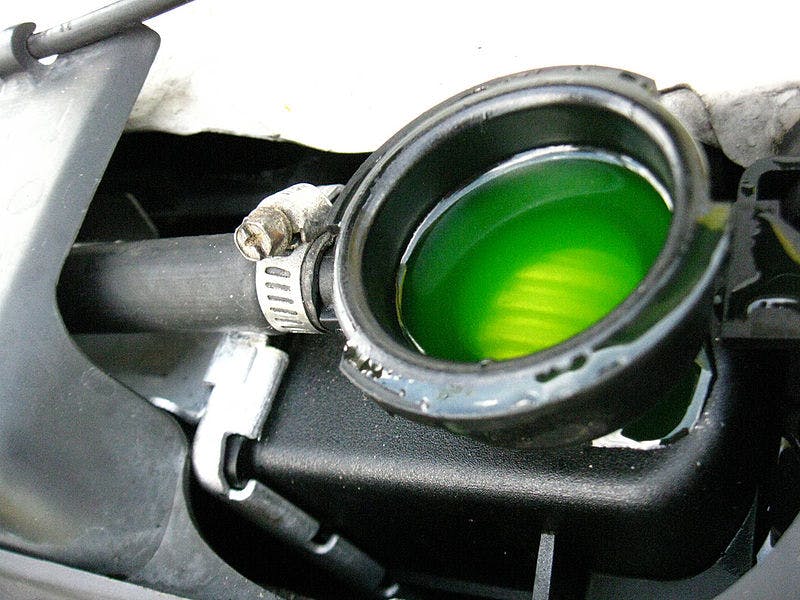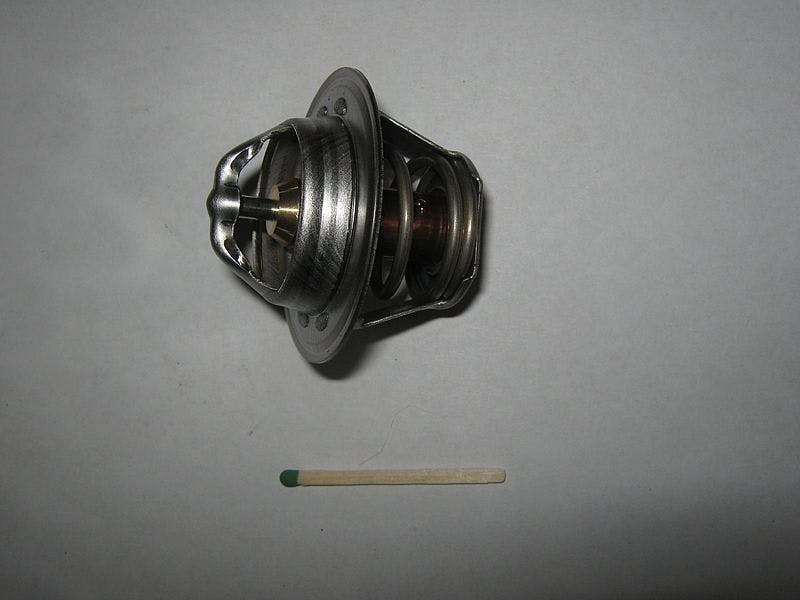Liquid-cooled engine: How does liquid cooling work?

A liquid-cooled engine is a combustion engine that uses a cooling liquid to remove heat from the cooled surfaces, dissipating this heat into the air.
Liquid cooling of the engine is indirect because the liquid is only an intermediary for transferring temperature from the engine to the air. Distilled water or antifreeze is used as a cooling liquid.
Spis treści
How does a liquid-cooled engine work?
A liquid-cooled engine is constructed so that the head and cylinder block has a double wall forming the shell. This shell is filled with cooling liquid, which, after heating, flows into the cooler, where it is subsequently cooled by flowing air. The cooled liquid is then returned to the engine, and this process is repeated repeatedly.

Thermostat: How does it work?
The cooling circuit is closed when the engine is cold, and the coolant is only in the engine block and cylinder head. The thermostat opens only after the engine warms to about 80 degrees Celsius, allowing coolant to flow into the radiator to transfer its temperature to the air.
Components of the cooling system of a liquid-cooled engine
1. Coolant pump (water pump)
The coolant pump is often referred to as the water pump. A rotor with blades rotates in the pump, which pushes the liquid in the desired direction. The pump is driven electronically or using a V-belt, and the cooling liquid is supplied either from the radiator or the thermostat chamber.
2. Cooler
The role of the radiator is to remove the heat the coolant receives from the engine into the air. The cooler consists of an upper and lower chamber for the cooling liquid, between which a heat exchanger is placed, and cooling liquid pipes.
3. Thermostat
A thermostat is a device that controls the flow of coolant in the engine's cooling circuit. The thermostat's task is to control the cooling circuit and reach and maintain the optimum operating temperature of the engine as quickly as possible, which greatly influences fuel consumption, engine wear, and exhaust gas composition.
4. Fan
The role of the fan is to supply the radiator and engine with sufficient cooling air.
5. Coolant temperature sensor
The coolant temperature sensor records coolant temperature data, which it then sends to the engine control unit. The data from the sensor is one of the important pieces of information, with the help of which the engine control unit finds out what state the engine is in and changes the engine's working mode accordingly.
6. Heating radiator
The heating radiator secures the air flowing into the driver's cabin.
7. Equalizing container
It serves to equalize the pressure of the coolant when the engine is cold and warm.